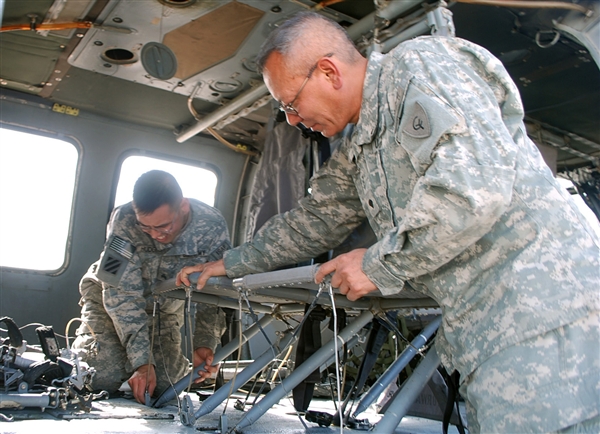WASHINGTON, June 1, 2010 — Some homes have attics, basements or garages full of extra things that simply don’t get thrown away. International forces in Afghanistan have found that such a hoarding mentality applies to ammunition, regardless of its quality.
During a May 28 “DoD Live” bloggers roundtable, Army Col. Ronald L. Green, logistics director for Combined Security Transition Command Afghanistan, discussed the dangers surrounding old ammunition stockpiles and the challenges the NATO training mission faces in getting rid of them.
Over the past three years, the training command has identified 6,325 metric tons of unsafe and surplus ammunition, Green said, but its removal and destruction requires approval from the Afghan defense ministry and an OK from Afghan President Hamid Karzai. New reports of ammunition stockpiles, some nearly 40 years old, continue to come in, the colonel added. “The latest one was at an airfield supply port, where we found another 380 metric tons,” he said.
Green said it’s common for armies to destroy expired ammo, as its use, even in training situations, could put soldiers’ lives in danger. “Quite frankly, we destroy a lot of [our] ammo, because it just goes bad,” he said. “And our hands are tied right now, because we cannot destroy one ounce of [this expired Afghan] ammo.”
Though he has tried to influence the defense ministry officials to destroy the old ammo, Green said, the “cultural affinity toward hoarding” in Afghanistan tends to override his suggestions.
“They don’t want to be the one that destroyed it, and it could be used against them later on, because [the stockpiles are] a national treasure in their eyes.”
While the hoarding of old ammunition mostly amounts to a waste of storage space that could be better used, Green said, some in the Afghan defense ministry think the ammunition is suitable for use. “If you can clean off a 40-year-old round and buff it down, to a point where it looks like new brass, they believe it’s good,” he said.
International forces in Afghanistan will have spent about $1.2 billion for ammunition, factoring in the next four years, Green estimated, for both NATO forces and for the Afghan army. Because they can’t remove old ammunition, he said, they’re running out of space quickly.
About 1.3 million pounds of ammonite, an explosive compound, is being stored in Herat. It was placed there by the Indian government to help with the construction of a dam — “a very good reason to have that type of commercial-grade explosives,” Green said.
However, Green said, the material has degraded over the year or two it’s been there, and it could be used for nefarious purposes. He noted that the April 19, 1995, bombing of a federal building in Oklahoma City was accomplished with 3,000 pounds of low-grade explosives.
“This is commercial-grade,” he said of the explosive material being stored in Herat. “And we’re talking 1.3 to 1.5 million pounds. So this is what keeps me up at night.”
Source:
U.S. Department of Defense
Office of the Assistant Secretary of Defense (Public Affairs)

 von
von 